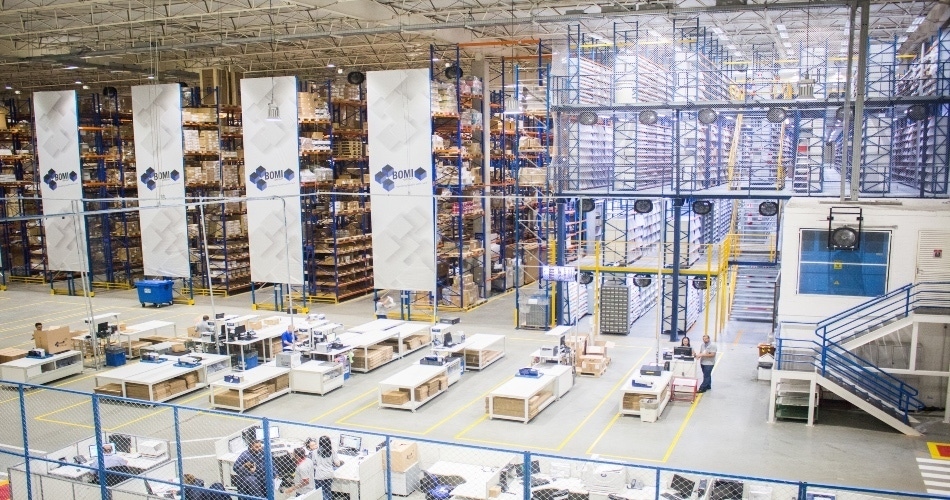This isn’t a trend that is expected to go away in the imminent future.
“It’s fair to say that as long as retail sales keep growing, there’s going to be a continued demand for new space,” said Paul Hyde, co-founder of Minneapolis-based Hyde Development. “As long as worldwide capital trends continue, there’s going to be capital for these buildings.”
Hyde added that if something happens that makes interest rates rise, or liquidity an issue, it could cause a slowdown.
“Ultimately, [this] industrial trend is something people don’t see going away,” he said.
The advancement of technology and the evolving needs of industrial spaces has also shaped the strength of the sector, and how it has grown into the future. On our Transforming Cities podcast we interviewed George Cutro and Chad Buch of JLL. They discussed how the industrial commercial real estate landscape has changed with automation, robotics, and e-commerce.
In this article, we will explore the trends that have led to the success of industrial real estate, as well as the direction technology is taking it.
There are two main factors behind the great sales and leasing activity of industrial real estate, as well its continued development.
According to Hyde, the first is capital, which has been fueled globally by an environment of depressed interest rates. With low, and sometimes negative rates, money needs to be held somewhere. Real estate is an attractive home for it because it almost guarantees you won’t lose your principal amount, you’ll get money back in rent, and that rent increases every year, Hyde said.
Capital is trying to find its way into real estate, and industrial real estate has been an incredibly safe bet. That leads into the second major factor; user trends. As many consumers are transitioning from doing the majority of their shopping in shopping centers and stores to online, that has created a much higher demand for distribution centers.
Many people think mainly of Amazon when discussing this trend, but the fact of the matter is a large amount of retailers now have an online presence. With the increase of smaller quantities of goods being shipped to a wider variety of places, networks of warehouses and distribution centers are needed to feed this demand. Hyde pointed out that it’s not just retail consumers, but businesses as well.

Predictably, the rise of e-commerce has revitalized a need for more distribution and sorting center type buildings, according to Jason Walter, a project manager at Mortenson Construction.
“There have been some larger than average projects come along as a result – your Amazon DC’s for example – though building size can vary greatly relative to use and product type and location,” he said.
This has also added strength to the parcel delivery world, he said, as the need for those services is on a linear incline relative to the rise in internet purchasing.
On the podcast, Cutro also pointed out that e-commerce has changed the supply chain cycle in the way things are moved.
“What was typically the standard from five days is now [delivering] within a couple of hours,” he said. “And in order to feed that beast, you need to have more distribution centers.”
As long as online sales continue to grow, so will the demand for more industrial buildings. Because e-commerce has become a part of everyday life, it’s likely that the cycle won’t slow down for quite some time.

The use of new technology is “surprisingly prevalent in distribution facilities,” said Walter. He added that the advancement of some companies’ systems is impressive as well.
“Some building users are tracking hundreds of thousands of different SKU’s (stock keeping unit), where their systems know exactly where each piece of product is at any given time,” he said. “The progression of automation in picking systems and order fulfillment has been impressive to see as well.”
The strength of industrial real estate’s growth has called for larger buildings. A lot of newer builds have heavy air conditioning, more amenities, and sensors, Buch said. He added that there’s heavy-duty wireless infrastructure, and a lot of handheld devices that scan barcodes on all packages going in and out.

“[This] requires a really robust IT infrastructure as well as increasingly a lot more automation whether that's package sorters, material handling infrastructures, spiral sorters and things like that to direct products in and out of the building,” Chad Buch said on our podcast.
Automated storage and retrieval systems that move pallets up and down are also common features in new buildings. All of this makes these developments far more complex and expensive than those in decades past.
Robotics that scan, read, and place packages while moving up and down aisles is a growing trend, Hyde said. It’s expensive technology so it’s not widespread yet, but he said it will become more common in the coming years.
Buch used Prologis’ Seattle warehouse as an example of the cutting edge technology in the industry. He explained that a transporter drives their truck onto a ramp that takes it to another level, depending on the size of the truck. Some levels are for parking, manufacturing, and assembly, while others are for shipping and receiving. This building is for a multi-tenant scenario; and ultimately, these new-age buildings are going to be bigger, expensive, and multi-functional.
Beyond just the building itself is the way it’s marketed. Technology has allowed better digital marketing, from a virtual tour to 3-D photography.
“One of the best things we’re doing is using the Matterport camera,” Buch said. “[It’s a] 3D movable camera that you can be positioning in a couple different corners of the building and when we make a custom branded webpage for any of our marquee listings, we're embedding that footage into these websites so you can send the brochure and a link to the website to a prospect and they can virtually tour the building without getting in their car and going to see it.”
These virtual tours and in-depth look of industrial properties, from the loading docks, to truck ramps, to the equipment inside can help raise interest in the property, and even lead to a signed lease.
However, Hyde pointed out that for as far as industrial real estate technology has come, it still has a ways to go.
“It’s still a very people-driven industry,” he said. “Tenants are still finding buildings with brokers; there are [listings] online, but human interaction leads people to find their space.
Technology is innovative in the business, but it won’t replace the human, he said.
You can find other episodes of our Transforming Cities podcast here. Paul Hyde, who was featured in this article, is a guest on another episode of our podcast, where he discusses his entrepreneurial journey in commercial real estate. Check that episode out here!
Subscribe here to get our short and sweet monthly newsletter!